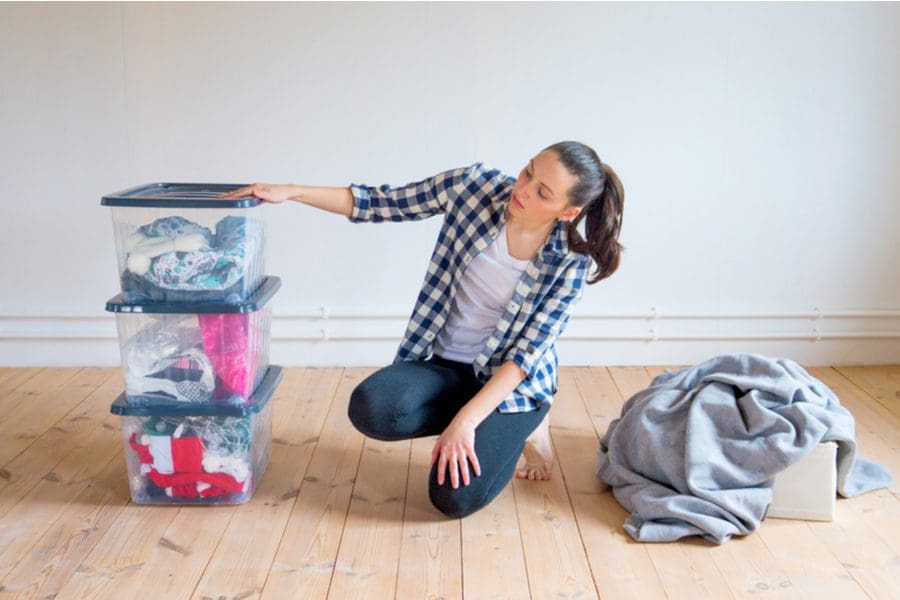The changing temperatures outside means it’s time for the tedious task of storing last season’s clothes. If you think, “I can just throw this stuff in a cardboard box for a few months,” think again. There are a few steps you should add to the process to ensure that your clothes come out of hiding just as nice as they went into it. Here are our tips for storing out-of-season clothing.
Thin Out Your Wardrobe
This transitional time is the perfect opportunity to go through your wardrobe and get rid of anything you don’t wear, doesn’t fit like you want it to, or doesn’t bring you joy. (Yeah, we went there, Marie Kondo.)
Wash What Is Left
This is probably a no-brainer, but wash your out-of-season clothes before packing them away. If not, any stains that you may have forgotten about will only get darker. Clean clothes are also less likely to attract critters, plus you have the added benefit of your clothes smelling better. Pro tip: Pack your clothes with some dryer sheets to keep them smelling extra fresh.
Choose the Right Container
Our biggest piece of advice: Steer clear of cardboard boxes. They attract insects and won’t protect your clothes from the elements (like an unexpected flood). Your best bet is to store your clothing in clear, stackable plastic totes. You can see through them just in case you need to grab something during the off-season. But if your totes are going to be exposed to sunlight, choose darker plastic. You won’t be able to see through it, but you won’t risk your clothes fading.
Say No to Mothballs
We’re all about protecting your clothes from moths, but mothballs can be toxic to tiny family members of both the human and furry variety. Instead of mothballs, opt for cedar or lavender sachets.
Hang What Needs It
Certain garments will fare better if they’re hung up. To do this properly, use a garment bag or vacuum seal them. Just make sure the items you are hanging are sturdy enough to do so; you don’t want to stretch out or cause mis-shaping to any pieces.
Find the Best Spot
You want a cool, dry, dark area of your home to store your clothes. The best places are closets or under the bed. Basements are okay as long as they aren’t prone to flooding. The same goes for attics and garages, which will work so long as they are not exposed to excessive heat. Insects also tend to love these areas. Pro tip: Purchase some bed risers to create more space under your bed for storage.
Check On Your Clothes
It’s important to check on your garments once in a while to make sure they are still intact. Once you’re ready to switch out again, wash all your clothes before putting them back in the closet. And double-check to make sure your plastic totes are still in good condition, meaning they don’t have any cracks or damage.






